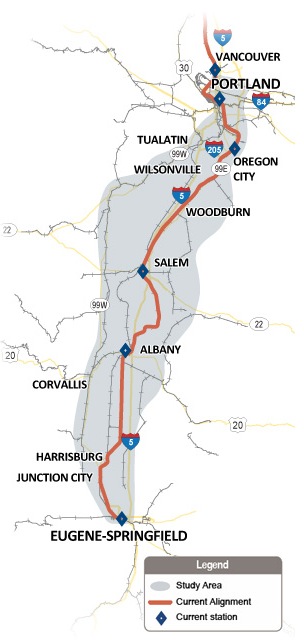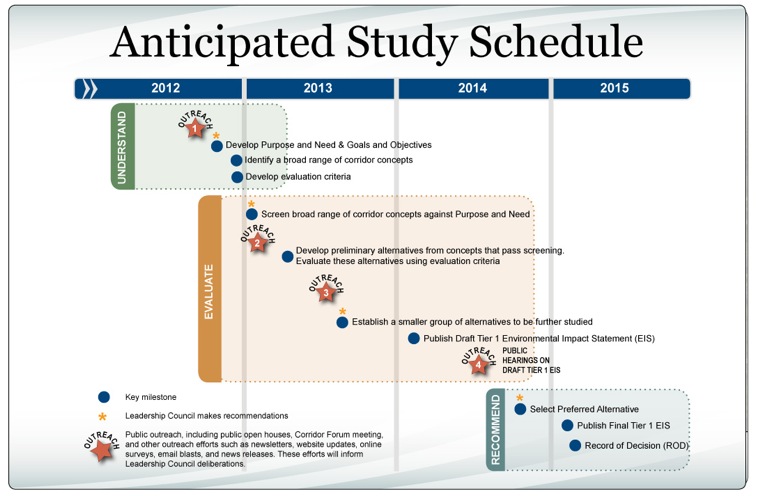OREGON DEPARTMENT OF TRANSPORTATION
Introduction
The project is studying options to improve passenger rail service between Eugene-Springfield and Portland-Vancouver, WA.
The project team is conducting a National Environmental Policy Act (NEPA) environmental review process, which will make decisions on:
- How frequent and fast rail service should be.
- What rail route should be used.
- What kinds of technology should be used.
- Where stations should be located.
- Whether it should be different than what exisits today.
In the fall of 2012, the project team asked the public to provide input on what they think is important in moving forward with this study. The public provided various ideas for rail route alternatives, and gave feedback on what values the project should promote. This online open house will present the potential rail route options that were suggested, as well as the goals and objectives developed in response to public comment.
Project Purpose
The purpose of the Oregon Passenger Rail Project is to improve the frequency, convenience, speed and reliability of passenger rail service along the Oregon segment of the federally-designated Pacific Northwest Rail Corridor (PNWRC) in a manner that will:
- Provide riders with an efficient, safe, equitable and affordable alternative to highway, bus, and air travel;
- Be a cost-effective investment;
- Protect freight-rail carrying capability;
- Support the ongoing implementation of regional high speed intercity passenger rail in the PNWRC between the Eugene-Springfield metropolitan area and Vancouver, British Columbia;
- Be compatible with the Washington State portion of the PNWRC;
- Promote economic development;
- Avoid or minimize community and environmental impacts; and
- Integrate with existing and planned multi-modal transportation networks.
Project Need
Multiple transportation, land use, socioeconomic, and environmental considerations drive the need for this project, including:
- Increasing intercity and regional travel demands;
- Limited rail system capacity and competing service needs
- Declining state and local roadway funding;
- Increased economic vitality of the corridor;
- Protect freight-rail carrying capability;
- Promoting transportation system safety and security; and,
- Changing transportation demand resulting from demographic changes.
View interactive study (OregonPassengerRail.org): Oregon Passenger Rail Online Open House
About the Oregon Department of Transportation
www.oregon.gov/odot
The Oregon Department of Transportation began life in 1913 when the Oregon Legislature created the Oregon Highway Commission to “get Oregon out of the mud.” Today, the Oregon Department of Transportation works to provide a safe, efficient transportation system that supports economic opportunity and livable communities for Oregonians. We develop programs related to Oregon’s system of highways, roads, and bridges; railways; public transportation services; transportation safety programs; driver and vehicle licensing; and motor carrier regulation.
Tags: Interactive, ODOT, OR, Oregon, Oregon Department of Transportation







 RSS Feed
RSS Feed